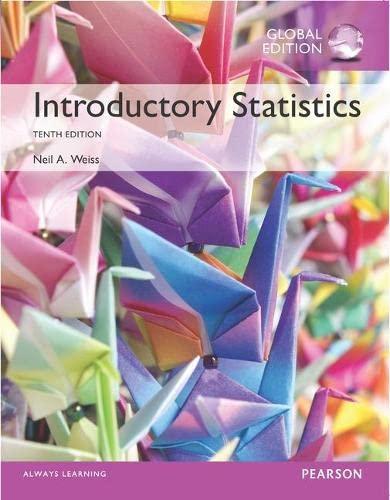Permutation Tests. With the advent of high-speed computing, new procedures have been developed that permit statistical inferences
Question:
Permutation Tests. With the advent of high-speed computing, new procedures have been developed that permit statistical inferences to be performed under less restrictive conditions than those of classical procedures. Permutation tests constitute one such collection of new procedures. To perform a permutation test to compare two population means using paired samples, we proceed as follows.
1. For each pair, switch or don’t switch the two observations with probability 0.5. This procedure yields a new paired sample.
2. Compute the mean of the new paired differences.
3. Repeat steps 1 and 2 a large number (hundreds or thousands) of times.
4. The distribution of the resulting paired-difference means provides an estimate of the sampling distribution of the sample mean of paired differences when the null hypothesis of equal population means is true. This estimate is called a permutation distribution.
5. The (estimated) P-value of the hypothesis test equals the proportion of values of the permutation distribution that are as extreme as or more extreme than the observed mean of the paired differences.
Refer to Example 10.16 on pages 511–512. Use the technology of your choice to conduct a permutation test and compare your results with those found by using the paired t-test. Discuss any discrepancy that you encounter.
Step by Step Answer:






